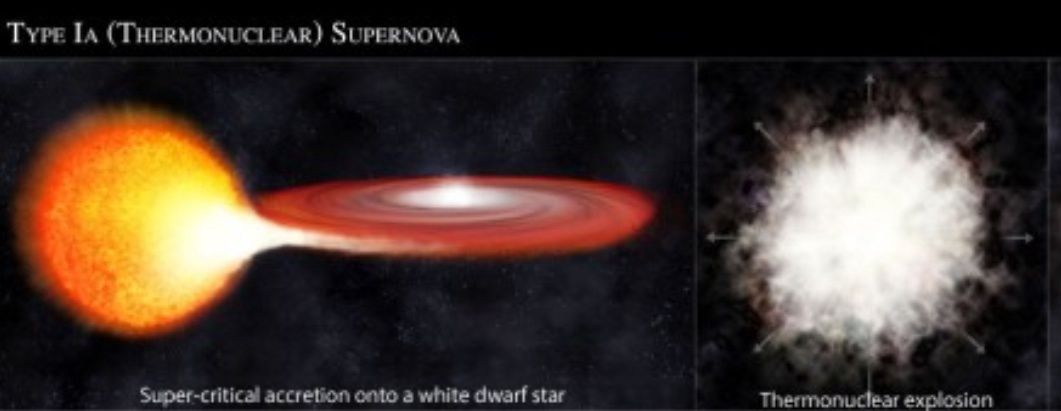
Chandrasekhar limit
Chandrasekhar limit
I keep using this term in astronomy discussions. What is a Chandrasekhar Limit?
The simple definition is that it's the maximum mass of a stable white dwarf star. It was named after the great Indian astrophysicist who came up with an accurate calculation of this property.

White dwarf stars are the remains of a normal star that comes off the main sequence. This is where it runs out of hydrogen and begins to burn helium to become a red giant star. Eventually, the star's helium will combine to form carbon and release lots of energy. This will cause the star to blow off its outer layers, ending up as only a core in which all fusion reactions cease. When this happens the only thing that keeps the core from collapsing under gravity is electron degeneracy pressure. This is a quantum effect in which two identical half-spin fermions are unable to occupy the same space. In the case of a white dwarf core, this refers to electrons. Electrons are negatively charged and repel one another. This is what creates the pressure to prevent the white dwarf star from collapsing as long as the gravity is not too high.

Actually, this kind of pressure is the result of the Pauli exclusion principle, which dictates that two electrons can't occupy the same location unless they have different energy levels. This won't happen unless the mass of the dwarf star stays below the Chandrasekhar limit, which is 1.44 times the mass of our sun.
A normal star on the main sequence while fusing hydrogen into helium avoids collapse because of the heat generated by the fusion reaction. A dwarf star is no longer fusing and it must depend on the electron degeneracy pressure to avoid collapse.

When the white dwarf star steals material from a companion star, it gains in mass, and when this mass exceeds the Chandrasekhar limit, the star tries to collapse. This causes a massive explosion, known as a type 1a supernova.
Stars which are less than 8 solar masses will, when they stop fusing, blow off their outer layers and become a white dwarf that is below the Chandrasekhar limit. Stars larger than 8 solar massive go supernova and end up as a neutron star or a black hole.
Surprisingly, a white dwarf star has been observed to exceed the limit and explode after reaching twice the Chandrasekhar limit. This was the so-called 'Champagne Supernova' on April 2003. Two theories were proposed as to how this could have happened. One is that the white dwarf was spinning so fast it allowed centrifugal force to avoid the limit. Another theory attributed it to two white dwarfs colliding.
Why don't neutron stars obey this limit? Neutron stars are also not fusing, but they are so dense that electrons combine with protons to form neutrons. In this case the neutron degeneracy pressure keeps the star from collapsing at a much higher limit called the Tolman-Oppenheimer-Volkoff limit. Isn't science wonderful!
Thanks for reading.
Bạn đang đọc truyện trên: Truyen247.Pro